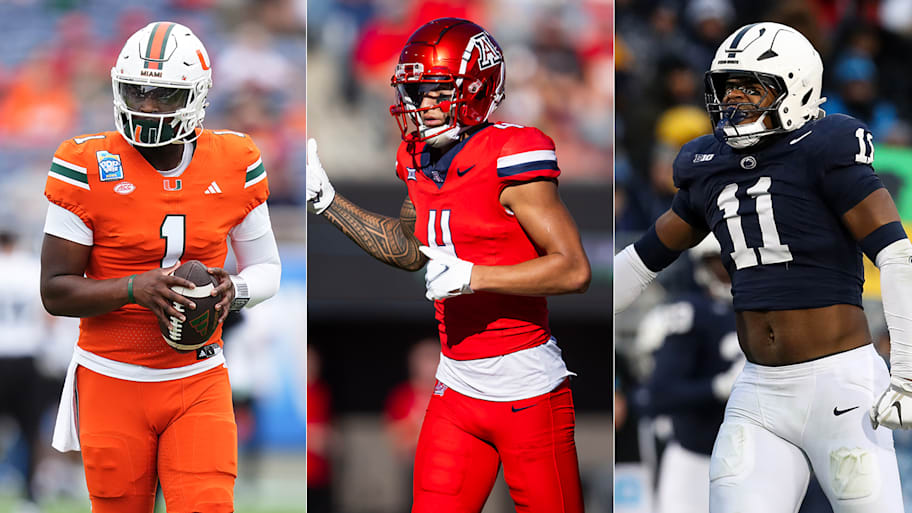As NFL teams progress through the early stages of their offseason programs, internal optimism is high for each rookie class.
Teams have different expectations for their rookies. Some will be tasked with starting and impacting games this fall. Others needing development will take a backseat with their eyes toward the future.
Regardless of the path, each team will have one rookie who shines brighter than the rest in his class. Here’s Sports Illustrated’s predictions for all 32 teams.
AFC North
Baltimore Ravens: Malaki Starks, S
There may not have been a better fit in the first round than the Ravens and Starks, whose versatility and intelligence on the back end elevate those around him and open the door to creativity for defensive coordinator Zach Orr. Starks can play single-high, split field and nickel corner, and his athleticism, instincts and competitiveness enable him to do each at a high level. He should be an early difference-maker for Baltimore’s defense.
Cincinnati Bengals: Demetrius Knight Jr., LB
In the first round, the Bengals took a swing on Texas A&M pass rusher Shemar Stewart—a high-ceiling but underproductive physical specimen—and Stewart figures to be a developmental prospect. Second-round linebacker Demetrius Knight Jr., meanwhile, is in line to start next to Logan Wilson and should produce early and often. Knight is rangy, physical and competitive, and as Cincinnati aims to take a substantial step forward defensively, the South Carolina product is a quality piece in the middle.
Cleveland Browns: Carson Schwesinger, LB
The Browns will be without starting linebacker Jeremiah Owusu-Koramoah, who suffered a neck injury in Week 8 last year, for the entire 2025 season. Schwesinger, the No. 33 pick, will be vaulted into a prominent role early in his pro career, and he should shine. Schwesinger, a walk-on-turned-All-American at UCLA, is rangy, instinctual, capable in zone coverage, and a proficient tackler who can also make plays on special teams. First-round defensive tackle Mason Graham should have a standout rookie season, but Schwesinger could out-produce the draft’s fifth pick.
Pittsburgh Steelers: Derrick Harmon, DT
Third-round running back Kaleb Johnson is perhaps the only other viable candidate in a rookie class geared more toward the future, but Harmon should be a disruptive player early in his pro career. Harmon can play several spots on the defensive line, and has the length, explosiveness and power to wreak havoc on opposing linemen. The Steelers needed more pressure players on the interior, and Harmon was among the best in college football at getting to quarterbacks last fall.
AFC East
Buffalo Bills: Maxwell Hairston, CB
Hairston won’t be handed the starting No. 2 cornerback job—he will compete with Tre’Davious White and Dane Jackson— but there’s a strong chance the 30th pick hits the field in Week 1 opposite Christian Benford. Skinny yet explosive, Hairston is a proficient cover corner in both man and zone coverage due to his quick feet, fluid hips and standout instincts. He has a history of creating turnovers—he had five interceptions and two pick-sixes in 2023—and could be an early source of playmaking in Buffalo’s secondary.
Miami Dolphins: Jonah Savaiinaea, OG
Savaiinaea should take over for Robert Jones, who signed with the Dallas Cowboys in free agency, as Miami’s starting left guard. The 6' 4", 324-pound Savaiinaea played tackle at Arizona but is better suited for guard, where his powerful punch and second-level movement skills—and his lack of high-end lateral range—translate well. First-round nose tackle Kenneth Grant is a bit raw, but his size and strength alone should get him on the field for at least first and second downs. Still, Savaiinaea’s skill set and projection as a starter make him the best candidate.
New England Patriots: TreVeyon Henderson, RB
There’s an easy argument to be made here for No. 4 pick Will Campbell, who should be a solid decade-long starter at left tackle and is certainly a viable candidate. But the adjustment and learning curve is steeper for offensive linemen than running backs, and Henderson has a clear pathway to snaps and touches as early as Week 1. He’s a three-down back with the vision, footwork, athleticism and power to have an ultra-productive rookie season.
New York Jets: Armand Membou, OT
The Jets entered the draft needing a starting right tackle, and quickly checked that box with Membou, the No. 7 pick. Membou rarely loses synchronization between his hands and feet, and he pairs his technical prowess with high-end athleticism and power. There will be an adjustment period, but Membou is battle-tested from the SEC and has all the tools to be a quality strong-side blocker for Justin Fields.
AFC South
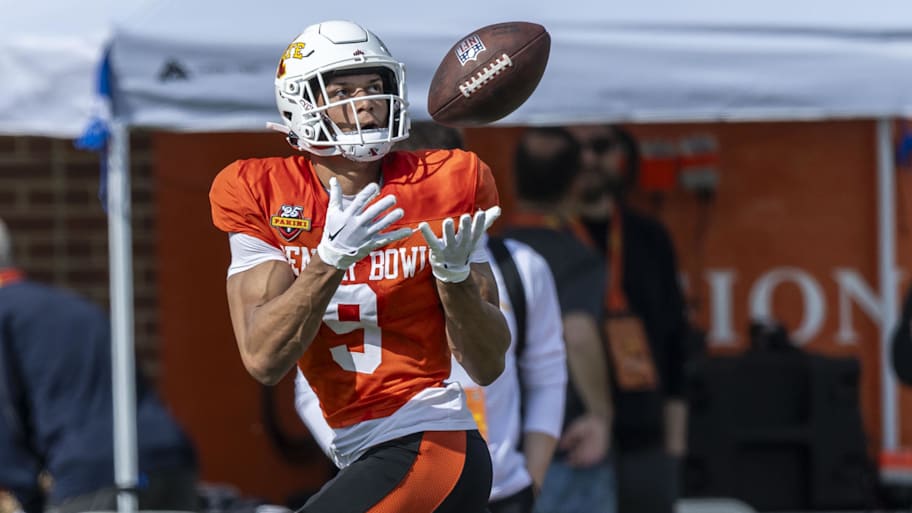
Houston Texans: Jayden Higgins, WR
Between Stefon Diggs signing with the New England Patriots in free agency and Tank Dell’s uncertain recovery timeline from a serious knee injury sustained Dec. 21 last season, the Texans’ receiving corps lacks depth and playmakers, sans Nico Collins and Christian Kirk. Higgins is a smooth-moving, sure-handed target at 6' 4" and 214 pounds, and his long strides and elusiveness make him dangerous after the catch. He should see a healthy dose of targets as Houston’s No. 2 receiver.
Indianapolis Colts: Tyler Warren, TE
The Colts’ struggles at tight end last season are well documented—they finished last in receptions, second-to-last in receiving yards, and tied for second-to-last in receiving touchdowns. Warren, the 14th pick who’s versatile, sure-handed and a force after the catch, could outproduce the entire room alone as a rookie. Toss in the Colts’ quarterback situation—they’ll have a competition between Anthony Richardson and Daniel Jones—and a presumptive high number of checkdowns, and the picture grows clear for Warren to see a heavy target share.
Jacksonville Jaguars: Travis Hunter, WR/CB
Hunter had little competition for this slot—Jacksonville didn’t pick again until No. 88— but it likely wouldn’t have mattered. Hunter’s rare two-way versatility should result in early impact plays on both sides. He’s athletic, explosive and has terrific ball skills, which translates to receiver and corner. Hunter is further developed at corner than receiver, but he’s talented enough to continue doing both at a high level.
Tennessee Titans: Cam Ward, QB
Ward will have to manage the pressure and expectations of being the draft’s top pick and anointed franchise savior, but he’s proven adaptable in stops at Washington State and Miami. The NFL is, of course, a different animal. Ward has the arm talent and intelligence to handle it. Tennessee should get solid contributions from Day 2 picks Femi Oladejo and Kevin Winston Jr., and several Day 3 skill position players could see snaps this fall. But Ward is the crown jewel of the class for a reason.
AFC West
Denver Broncos: RJ Harvey, RB
First-round pick Jahdae Barron projects as a versatile playmaker on Denver’s back end, but Harvey is in line for significant, starting-level snaps in the backfield. Short but compact at 5' 8" and 205 pounds, Harvey has above-average vision, which he blends with contact balance and elusiveness to create yards. He doesn’t have elite speed or acceleration, but he’s adequate in both and should be an efficient, productive runner in his rookie season.
Kansas City Chiefs: Omarr Norman-Lott, DT
It’ll be interesting to see how the Chiefs’ left tackle situation unfolds, as first-round pick Josh Simmons, who’s still rehabbing from a torn patellar tendon sustained in October, competes with free agent signing Jaylon Moore for the starting job. Norman-Lott faces no such questions. The Tennessee product is a potent interior pass rusher. With Chris Jones commanding extra attention next to him, Norman-Lott will have plenty of advantageous opportunities to disrupt opposing quarterbacks.
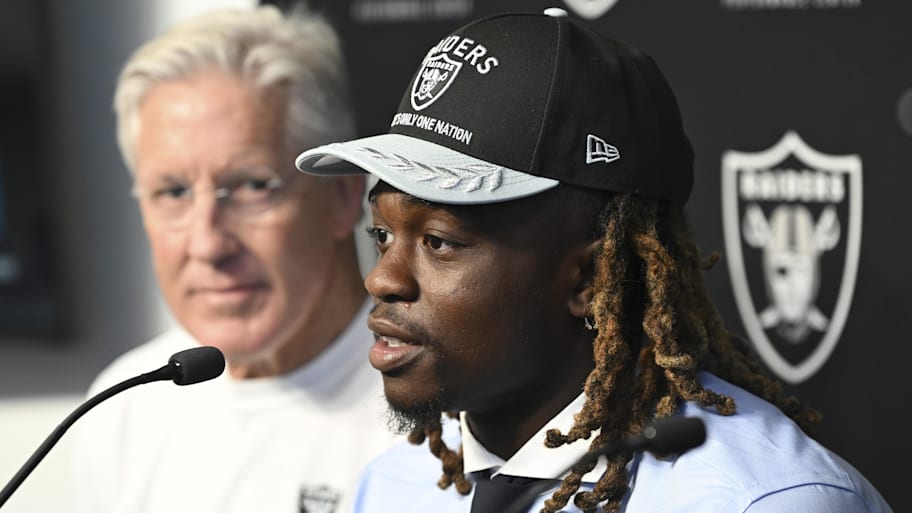
Las Vegas Raiders: Ashton Jeanty, RB
One of the best running back prospects in the past decade, Jeanty has the athleticism, instincts and contact balance to be an explosive yet efficient runner at the next level. The Raiders’ offensive line is middle of the road, but Jeanty is a special player who should have no issues eclipsing the 1,000-yard mark in his first professional campaign.
Los Angeles Chargers: Tre Harris, WR
The Chargers struck gold with a second-round receiver in 2024, as Ladd McConkey ranked 10th in the NFL with 1,149 receiving yards. While it’s unfair to place such expectations on the 6' 2", 205-pound Harris, the former Ole Miss pass catcher has the size, speed and instincts to be a productive rookie. With Los Angeles needing complementary targets around McConkey, Harris should get plenty of opportunities to impact games this fall.
NFC North
Chicago Bears: Luther Burden III, WR
The frequency with which the Bears use three receivers—DJ Moore, Rome Odunze and Burden—may directly influence how much first-round tight end Colston Loveland sees the field. It’s an unenviable problem for Bears coach Ben Johnson, but the reality is both Loveland and Burden, a second-round choice, will have every chance to play and produce at strong clips as rookies. With his speed, suddenness and run-after-catch potential, Burden had a chance to be a first-round pick. He fell, Chicago capitalized and both sides are now poised to benefit.
Detroit Lions: Tate Ratledge, OG
Detroit is expected to have competition at both guard spots, and Ratledge should earn one of the two jobs—most likely at right guard, where he started the past three seasons for Georgia. In addition to his bevy of starting experience and a pair of first-team All-SEC honors on his résumé, Ratledge has the size, power, athleticism and competitiveness to be a prominent piece on Detroit’s offensive line as a rookie.
Green Bay Packers: Matthew Golden, WR
The Packers broke a 23-year drought of not drafting a receiver by taking Golden at No. 23 overall. He should get every chance to prove Green Bay correct in its faith. Golden burned a 4.29 40-yard dash at the NFL combine, and he’s a loose mover with the route nuance to create separation. The Packers have a healthy number of receivers but no true star. Golden could emerge as that piece—soon.
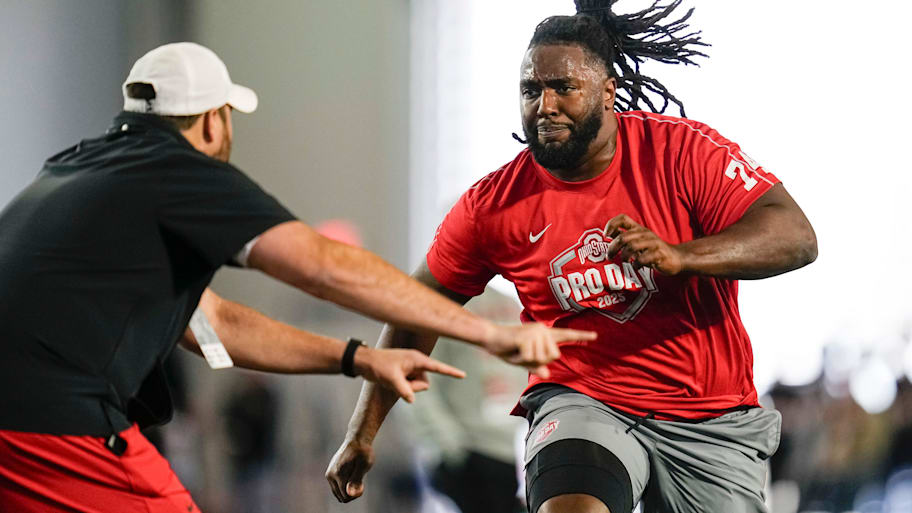
Minnesota Vikings: Donovan Jackson, OG
Jackson has the inside track to start at left guard, and his track record suggests he’ll do it at a steady level for a long time. Jackson, who has experience at both guard and tackle but is better suited inside, is highly athletic and a skilled mover in space. He should be a plug-and-play blocker with the feet and twitch to thrive in Minnesota’s wide zone-based rushing offense.
NFC East
Dallas Cowboys: Shavon Revel Jr., CB
The Cowboys have several quality candidates, such as first-round guard Tyler Booker and second-round pass rusher Donovan Ezeiruaku are both talented, ready-made players. But Revel, who’s long, athletic and instinctive, has a knack for making plays, and Dallas is no stranger to watching rookie corners produce—Trevon Diggs had three interceptions in 2020 and DaRon Bland had five in ’22. Revel may be next in line.
New York Giants: Abdul Carter, edge
Carter, the No. 1 player on SI’s big board, has the explosiveness, fluidity and hand refinement to be the same game-wrecker in New York as he was at Penn State. Carter understands the mental chess match against tackles, and is athletic enough to win more times than not. The Giants’ defensive line is deep and Carter could get one-on-one matchups on the perimeter. History says he’ll win.
Philadelphia Eagles: Andrew Mukuba, S
First-round linebacker Jihaad Campbell is athletic and versatile, and he should grow into a staple on Philadelphia’s defense. But Campbell’s early role with the Eagles is a bit uncertain. Mukuba, the team’s second-round pick, doesn’t face a similar issue. Philadelphia needed to replace starting safety C.J. Gardner-Johnson and find an answer opposite Reed Blankenship. Mukuba, who’s physical and explosive with above-average ball skills, has the tools to be the solution.
Washington Commanders: Trey Amos, CB
Commanders first-round offensive lineman Josh Conerly Jr. has an unclear path to playing time in 2025. Amos, conversely, will compete for the starting spot opposite Marshon Lattimore, a scenario which would move ’24 second-round pick Mike Sainristil to nickel. Amos fits Commanders coach Dan Quinn’s mold at corner with length, physicality and ball skills. He has the traits to develop into an impact starter.
NFC South
Atlanta Falcons: Jalon Walker, edge
The Falcons plan to use Walker as an edge piece on first and second downs before getting creative with him on third down. His athleticism, toughness and closing burst should translate well in passing situations, and he’s pro-ready from a mental and physical standpoint. Atlanta ranked second to last in the NFL with 31 sacks last season, but Walker has the chance to lead a new-look unit to brighter days.
Carolina Panthers: Tetairoa McMillan, WR
Rookie receivers need to win over their new quarterback during summer workouts, but McMillan has no such concerns. He caught passes from Panthers signal-caller Bryce Young in the spring, and Young reportedly urged Carolina to select McMillan with the eighth. The Panthers listened, and McMillan—a big-bodied target with smaller-frame movement skills and excellent hands—should slide into a starting role with multiple targets waiting for him.
New Orleans Saints: Kelvin Banks Jr., OT
The Saints are still trying to determine where Banks will play as a rookie, but he’s too big, powerful, athletic and instinctive not to crack the starting lineup. Banks believes he can stick at left tackle, where he started all three seasons at Texas, and the Saints feel the same way. Regardless of where Banks lines up, his skill set and collegiate experience against high-level pass rushers should upgrade the Saints’ offensive line.
Tampa Bay Buccaneers: Emeka Egbuka, WR
One of the calling cards of Egbuka’s predraft scouting report was his steady, reliable nature. He’s not flashy, but smart, smooth, a nuanced route runner and a willing blocker. Egbuka’s traits translate well to an early starting role at the next level, where he can interchangeably move throughout Tampa Bay’s offense alongside Mike Evans and Chris Godwin. All signs point to Egbuka, who played in 49 games over four years at Ohio State, making an impact in 2025.
NFC West
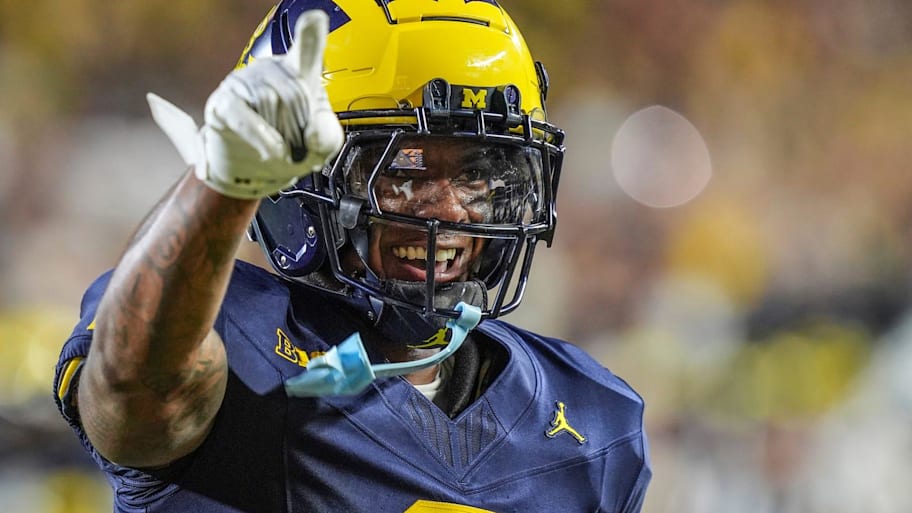
Arizona Cardinals: Will Johnson, CB
The Cardinals made a stellar value pick at No. 47, selecting Johnson, who fell in large part due to medical concerns. But Johnson was projected as an early-to-middle first-round pick during the 2024 season due to his fluidity, instincts, ball production and natural cover skills. If he’s healthy, Johnson has the potential to start and be a high-end corner in the NFL.
Los Angeles Rams: Terrance Ferguson, TE
The Rams traded out of the first round and moved down 20 spots to select Ferguson at No. 46. Ferguson will complement—and eventually unseat—Tyler Higbee, who’s 32 years old and entering a contract year. But Ferguson also has the tools to make an impact in 2025. The former Oregon standout is athletic, has quality ball skills, and can generate yards after the catch. He’ll be a nice weapon for Matthew Stafford sooner rather than later.
San Francisco 49ers: Nick Martin, LB
San Francisco lost starting linebacker Dre Greenlaw to the Broncos but added his replacement in Martin, a third-round pick from Oklahoma State. Opportunity exists for Martin, who has terrific range and blitz skills, to be an ultra-productive rookie. The 49ers will heavily depend on their 2025 draft class to reinvent their defense, and Martin figures to be a key piece in the middle of it all, literally and figuratively.
Seattle Seahawks: Elijah Arroyo, TE
A bit of projecting required with Arroyo’s role, as Noah Fant and A.J. Barner return to Seattle’s tight end room. But Arroyo’s athleticism and ability to stretch defenses vertically and horizontally give Seattle’s offense another playmaking element and, subsequently, an elevated ceiling. Arroyo has the versatility to line up in multiple spots and the ball skills and catch radius to haul in most passes thrown his way. His upside is exciting, and he could show it this fall.
This article was originally published on www.si.com as Predicting the Best Rookie on Every Team in 2025.
